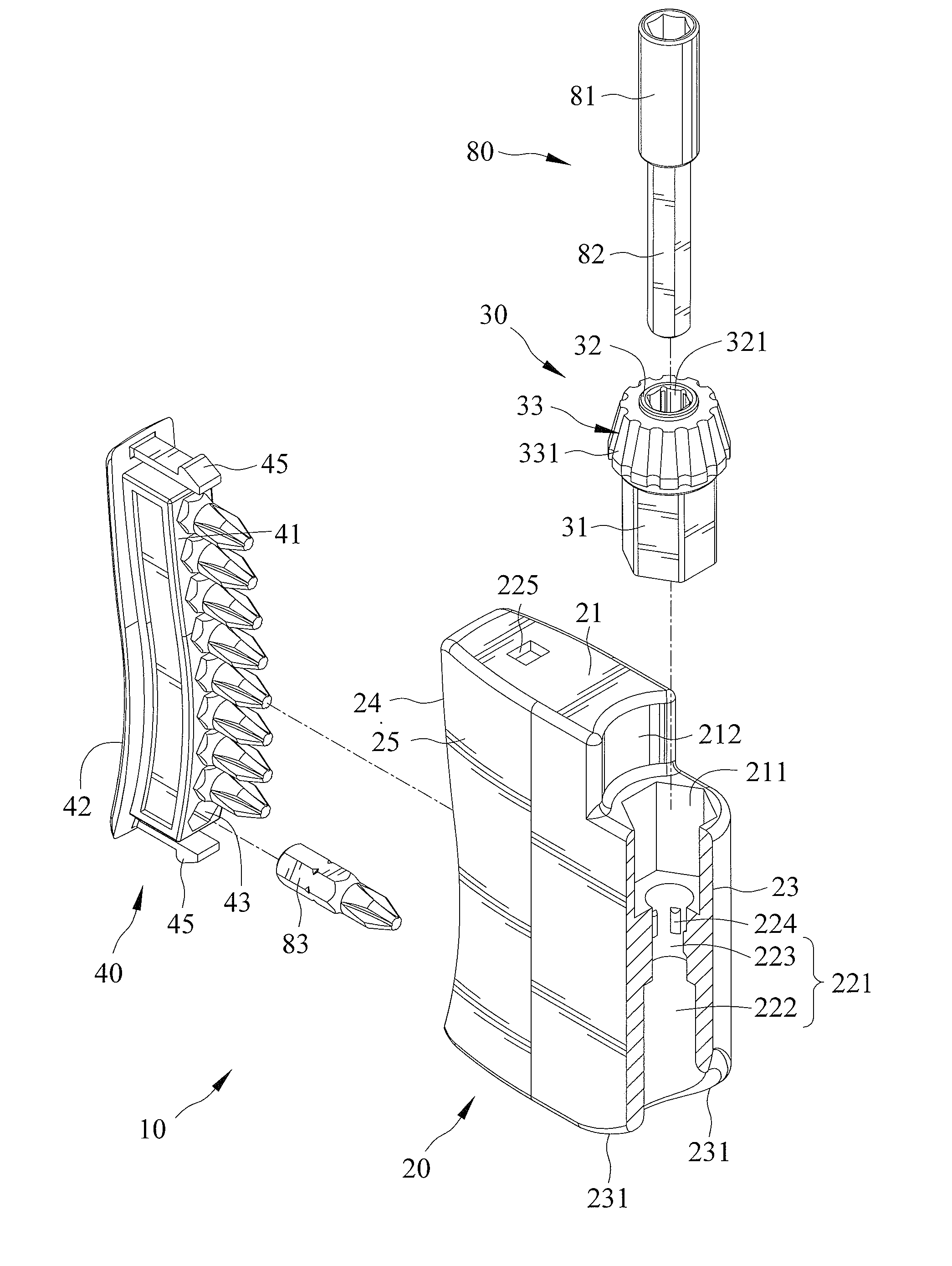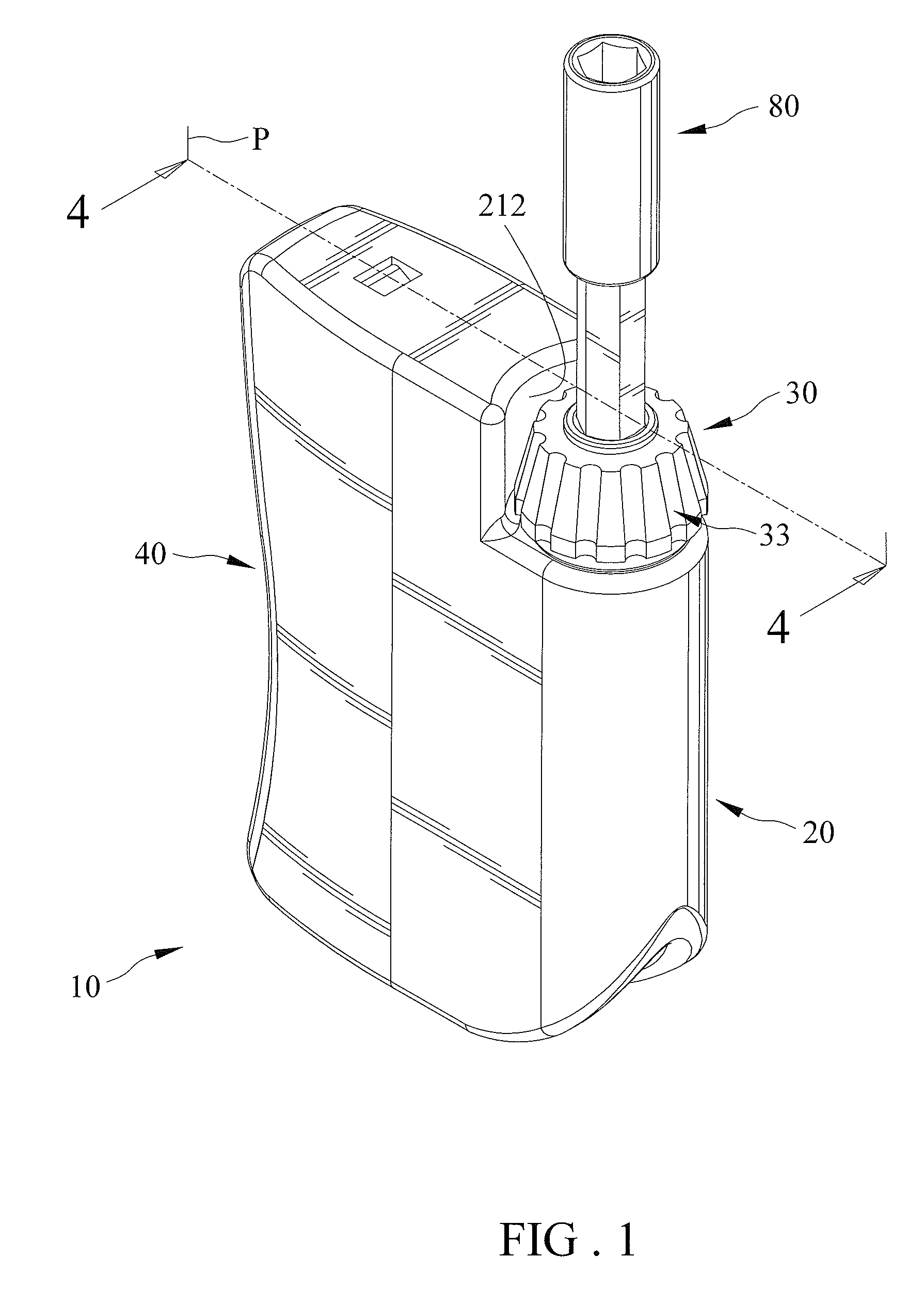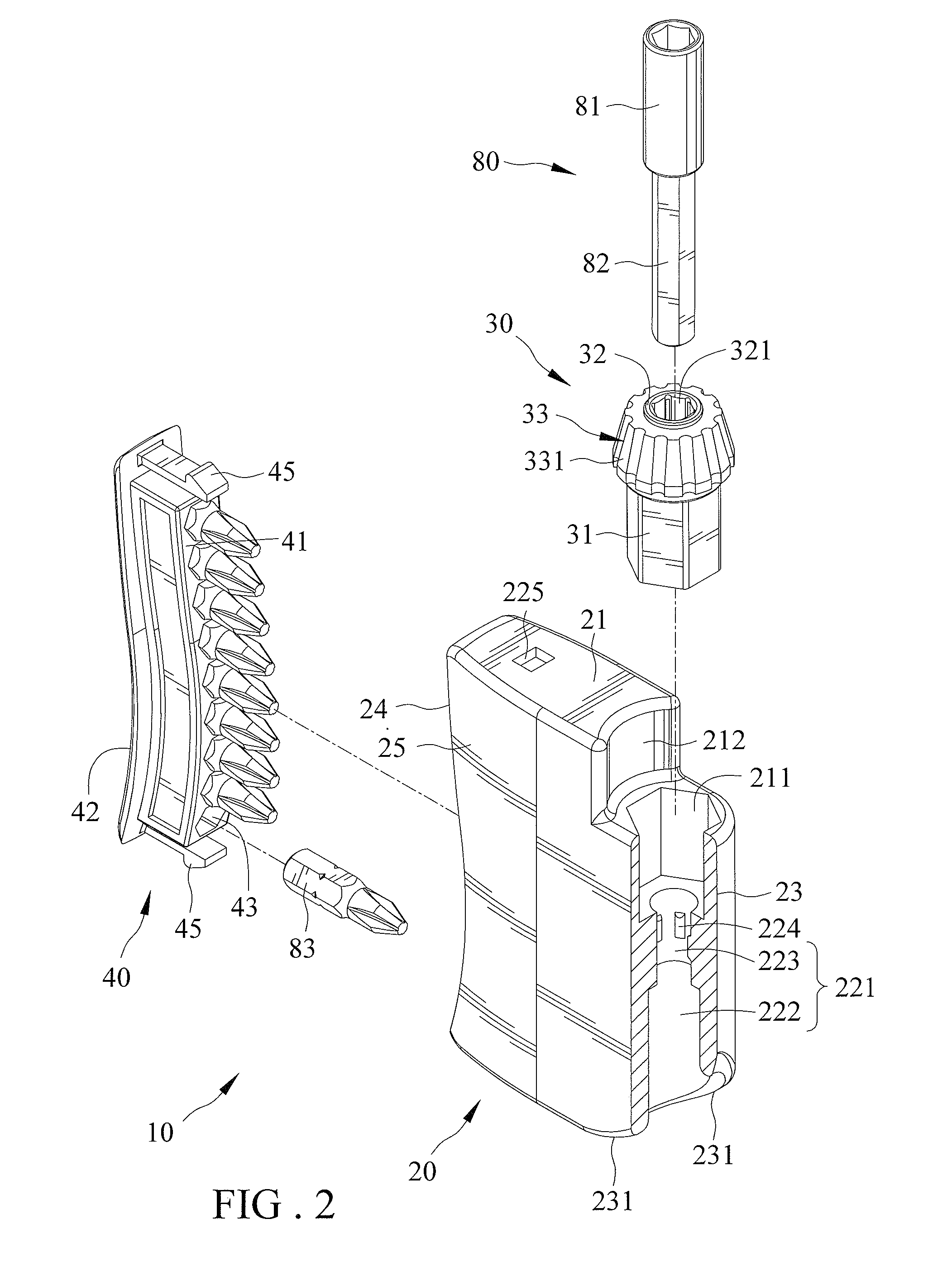Compact Tool Box with Ratchet Driving Function
a tool box and driving function technology, applied in the field of compact tool boxes with ratcheting driving function, can solve the problems of limited force applied by users, substantially cubic handle bodies that cannot be effectively reduced in width or height, and the combination of tools that are difficult to carry, etc., to facilitate the description of the invention
- Summary
- Abstract
- Description
- Claims
- Application Information
AI Technical Summary
Benefits of technology
Problems solved by technology
Method used
Image
Examples
Embodiment Construction
[0030]With reference to FIGS. 1-9, a tool box 10 of a first embodiment according to the preferred teachings of the present invention includes a body 20, a ratcheting mechanism 30, and a rack 40.
[0031]Body 20 is substantially a parallelepiped and includes a front end 21 and a force-receiving portion 22 spaced from front end 21 in a first direction X. Body 20 further includes first and second sides 23 and 24 spaced in a second direction Y perpendicular to first direction X and extending between front end 21 and force-receiving portion 22. Body 20 further includes two lateral walls 25 spaced in a third direction Z perpendicular to first and second directions X and Y and extending between front end 21 and force-receiving portion 22 and between first and second sides 23 and 24. Lateral walls 25, front end 21 and force-receiving portion 22 are integrally formed as a single and inseparable component of the same material.
[0032]A first maximum dimension of body 20 in first direction X betwee...
PUM
 Login to View More
Login to View More Abstract
Description
Claims
Application Information
 Login to View More
Login to View More - R&D
- Intellectual Property
- Life Sciences
- Materials
- Tech Scout
- Unparalleled Data Quality
- Higher Quality Content
- 60% Fewer Hallucinations
Browse by: Latest US Patents, China's latest patents, Technical Efficacy Thesaurus, Application Domain, Technology Topic, Popular Technical Reports.
© 2025 PatSnap. All rights reserved.Legal|Privacy policy|Modern Slavery Act Transparency Statement|Sitemap|About US| Contact US: help@patsnap.com



